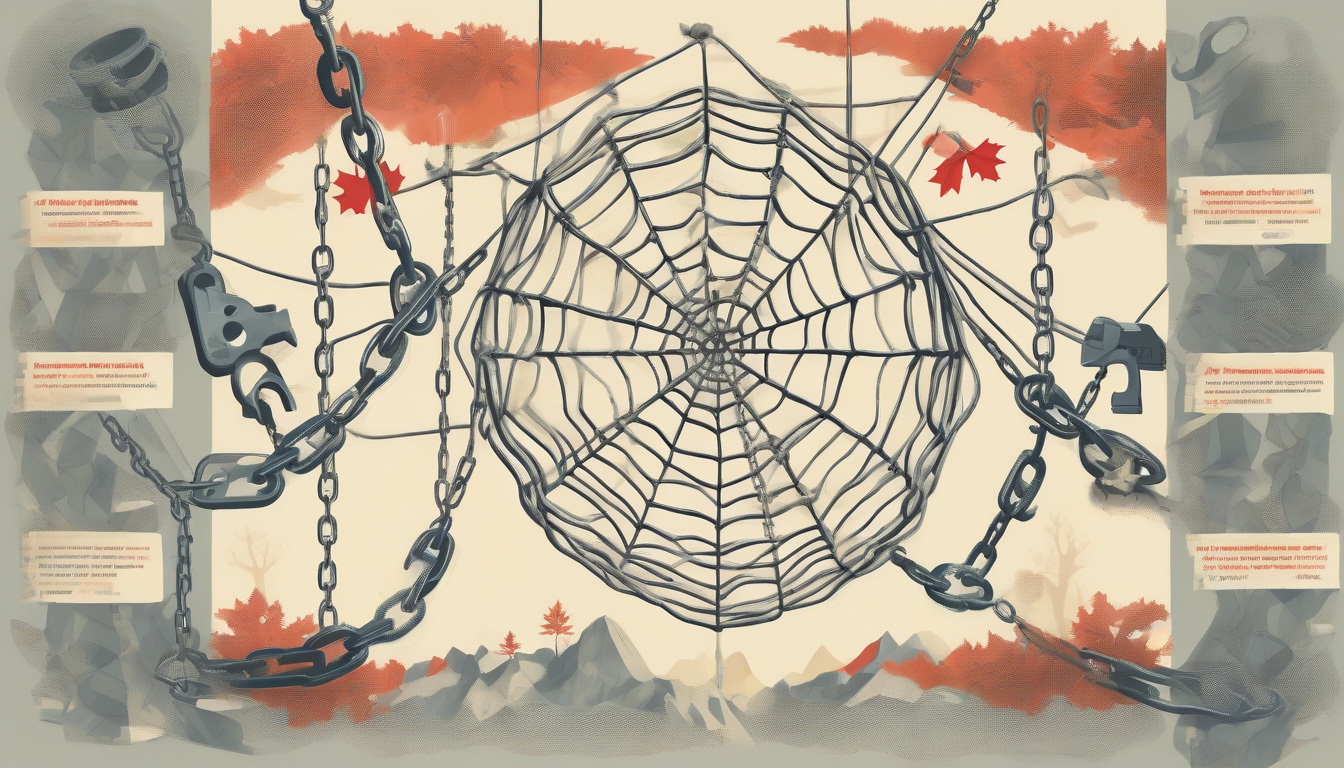In today’s economic landscape, many individuals and families face the burden of overwhelming debt, often feeling trapped and uncertain about their financial future. Fortunately, there is hope in the form of the federal debt relief program. This comprehensive guide aims to illuminate the various facets of the program, enabling readers to understand its eligibility criteria, application steps, and the myriad benefits it offers. Moreover, we’ll address common myths and misconceptions that often cloud this vital resource. Whether you’re struggling with credit cards, student loans, or other debts, this article will serve as your roadmap to unlocking financial freedom through federal support. Equip yourself with knowledge and strategies to take assertive steps towards regaining control over your financial destiny.

Key Takeaways
- The Federal Debt Relief Program provides structured assistance for managing and reducing federal debt.
- Eligibility for the program is based on specific criteria, including income level and type of debt.
- Applying for the Federal Debt Relief Program involves a straightforward process that can be completed online or via mail.
- Participating in the program can lead to significant benefits, such as reduced payments and improved credit scores.
- Myths about the Federal Debt Relief Program often lead to misinformation, making it important to understand the facts before applying.
Understanding the Federal Debt Relief Program
The Federal Debt Relief Program is designed to offer support and resources to individuals struggling with unmanageable debt, particularly those facing financial hardships due to unforeseen circumstances. This program aims to provide a structured process for debt resolution, which may include debt forgiveness, repayment plans, and financial counseling. The key objective of the federal initiative is to alleviate the burden of debt on citizens, helping them to regain financial stability and improve their economic conditions. It’s important to understand the eligibility criteria, application procedures, and potential benefits of the program to effectively navigate through the complexities of personal debt management. By addressing both educational and practical aspects, the Federal Debt Relief Program seeks to empower individuals with the knowledge and tools they need to make informed financial decisions and pursue a debt-free future.
Eligibility Criteria for the Program
## Eligibility Criteria for the Federal Debt Relief Program
When considering participation in the federal debt relief program, it’s crucial to understand the eligibility requirements that applicants must meet. These criteria not only ensure that the program is accessible to those who need it most but also help protect the integrity of the system. Here are the key eligibility factors:
###
1. Type of Debt
The program is primarily designed for specific types of debt, including federal student loans, credit card debt, and certain medical bills. Applicants should first confirm that their debt qualifies for relief programs offered by federal agencies.
###
2. Income Level
Many federal debt relief programs have income thresholds that applicants must meet. Generally, households earning below a certain percentage of the area median income (AMI) are encouraged to apply, as they may be considered at greater financial risk. Understanding your income versus the federal poverty guidelines can help determine your eligibility.
###
3. Residency Status
Eligibility may also depend on the applicant’s residency. Typically, individuals must be U.S. citizens or legal residents to participate in federal debt relief programs. This ensures that the assistance is directed towards those who contribute to, and are covered by, federal tax systems.
###
4. Debt-to-Income Ratio
A key measure of financial distress, the debt-to-income ratio, is often a determining factor for eligibility. Borrowers with a high ratio—usually above 41%—are seen as having more pressing financial needs, making them prime candidates for relief.
###
5. Credit History
While all applicants may not require a pristine credit score, certain programs may have stipulations regarding prior payment history. Consistent missed payments or defaults can potentially disqualify individuals from certain benefits within the federal debt relief program.
###
6. Documentation Requirements
Applicants are typically required to provide complete financial documentation, including tax returns, income statements, and details about current debts and expenses. Ensuring that you have these documents prepared can streamline your application process and improve your chances of acceptance.
###
7. Financial Hardship Proof
Most programs will require applicants to demonstrate or attest to a financial hardship that necessitates the need for debt relief. This could include job loss, medical emergencies, or other unforeseen circumstances that substantially impact an individual’s ability to maintain repayment schedules.
### Conclusion
Understanding these eligibility criteria is essential for anyone considering the federal debt relief program. By ensuring you meet the outlined requirements, you can better navigate the application process and increase your chances of receiving the assistance you need.
‘Debt is like any other trap, easy enough to get into, but hard enough to get out of.’ – Henry Wheeler Shaw

Steps to Apply for Federal Debt Relief
Applying for a federal debt relief program can seem overwhelming, but the process can be broken down into manageable steps. Here’s a detailed guide on what you need to do:
###
1. Assess Your Financial Situation
Before you apply, take a thorough look at your financial health. Gather information on all your debts, including credit card balances, loans, and any other financial obligations. Knowing the total amount you owe, your income, and your expenses will help you understand what relief options suit you best.
###
2. Research Available Programs
There are various federal debt relief programs available, such as Income-Driven Repayment Plans for federal student loans, mortgage assistance for homeowners, and other debt consolidation options. Research these thoroughly to identify the right program that fits your needs.
###
3. Collect Required Documents
Each program may have specific document requirements. Common documents include proof of income (like pay stubs or tax returns), a list of debts, and documentation of any financial hardships. It’s essential to gather everything beforehand to streamline the application process.
###
4. Contact Your Lender or Servicer
If your debt involves a loan, reach out to your lender or servicer. They can provide you with detailed information on applying for their specific relief programs. For student loans, you can find guidance on the Federal Student Aid website.
###
5. Complete the Application
Fill out the required application forms carefully. Make sure to include all requested information and check for accuracy. Incomplete or inaccurate applications can lead to delays or denials.
###
6. Follow Up
After submitting your application, it’s crucial to follow up with your lender or the program’s administrators. This ensures that your application is being processed and helps you stay informed about any additional steps or information they may need.
###
7. Stay Informed About Your Options
Even after applying, remain proactive in understanding your financial options. Attend seminars or webinars about debt relief, and keep an open line of communication with financial advisors or counselors.
###
8. Reassess Your Financial Strategy
If approved, adjust your financial strategy accordingly. Implement budgeting practices that help maintain your new financial situation, and stay committed to avoiding accumulating new debts.
Benefits of Participating in the Debt Relief Program
Participating in the federal debt relief program offers numerous advantages that can significantly improve your financial situation. Firstly, one of the primary benefits is the potential to reduce the total amount of debt owed. Many programs negotiate with lenders to lower the principal balance, which can provide substantial savings. Additionally, participants often experience reduced monthly payments, making it more manageable to budget for other essential expenses. This program also offers a stress relief factor, as individuals can escape the overwhelming cycle of debt collection calls and constant creditor pressure. Furthermore, enrolling in a federal debt relief program can help improve your credit score over time; by making consistent payments and settling debts, you demonstrate responsible financial behavior. Notably, these programs are often designed to be accessible, with assistance available from certified credit counselors who provide guidance tailored to your unique financial circumstances. Ultimately, participating in a federal debt relief program not only helps you regain control of your financial health but also paves the way for a more stable and secure future.

Common Myths and Misconceptions about Federal Debt Relief
When it comes to federal debt relief programs, a host of myths and misconceptions can often cloud the judgment of potential applicants. Many individuals believe, for instance, that these programs are one-size-fits-all solutions that offer instant relief without requiring any financial responsibilities or adjustments on their part. In reality, while federal debt relief programs can provide significant assistance to those in need, they often come with specific eligibility requirements and may necessitate a commitment to a structured repayment plan. Another common myth is that federal debt relief programs erase your debt entirely without impacting your credit score. While these programs can help reduce overall debt amounts and improve financial situations over time, they may initially have a negative effect on credit scores due to the restructuring of debts. Additionally, some think that applying to these programs is an arduous process that is only meant for the financially desperate; in truth, many applicants find the process straightforward and approachable, particularly with the aid of professional debt counselors. Understanding these misconceptions not only helps in clarifying the nature of federal debt relief programs but also empowers individuals to make informed financial decisions.
Frequently Asked Questions
What is the Federal Debt Relief Program?
The Federal Debt Relief Program is a government initiative designed to assist individuals in reducing their federal student loan debt through various relief options, such as loan forgiveness, consolidation, and income-driven repayment plans.
Who is eligible for the Federal Debt Relief Program?
Eligibility for the Federal Debt Relief Program typically includes federal student loan borrowers who are experiencing financial hardship, are in default on their loans, or meet specific criteria related to their income or employment status.
How do I apply for the Federal Debt Relief Program?
To apply for the Federal Debt Relief Program, you need to gather necessary documentation, such as proof of income and loan information, and submit a formal application through the appropriate federal loan servicer or the official government website.
What are the benefits of participating in the Federal Debt Relief Program?
Participating in the Federal Debt Relief Program can provide numerous benefits, including reduced monthly payments, the potential for loan forgiveness after a certain number of qualifying payments, and overall relief from the stress of unmanageable student debt.
Are there any common misconceptions about the Federal Debt Relief Program?
Yes, common misconceptions include the belief that the program is a scam, that anyone can qualify regardless of their situation, and that participation will negatively impact their credit score. In reality, legitimate forms of debt relief can improve financial health and are government-backed.
